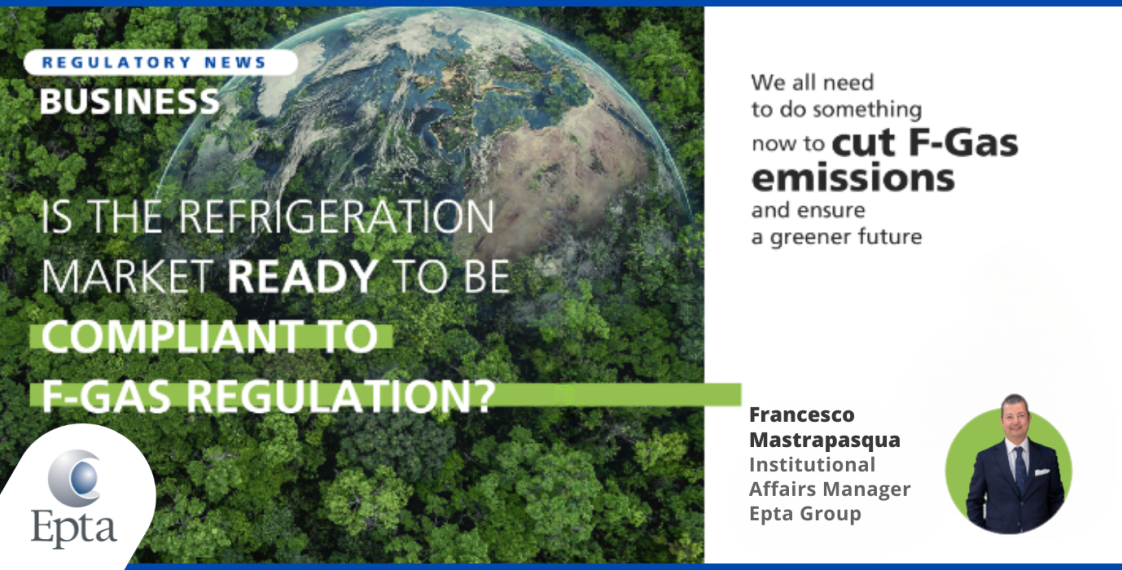ARE WE READY TO ABANDON ALL FLUORINATED GASES IN THE COMMERCIAL REFRIGERATION INDUSTRY?

Whether it involves industry professionals, policy stakeholders, or simply curious citizens, the majority of people are aware that several chemical substances, if dispersed in the environment, have a considerable impact on the planet and on the health of human beings.
Looking back in the history of refrigeration, ozone-depleting refrigerants were widely used until 2010 and then were replaced by other greenhouse F-Gases. These were subsequently found to considerably trap heat from the sun thus making the planet warm up faster because of their high global warming potential (GWP). The new F-Gas Regulation introduces several new limitations to the production, use and emissions from these substances, setting the stage for the complete elimination of HFCs in the EU by 2050.
Lately, a new generation of synthetic gases, the HFC-HFO blends, have appeared on the market promising to overcome these environmental issues.
COOLING AT A COST: THE HIDDEN DANGERS OF HFOS AND PFAS
Hydrofluoroolefins (HFOs) are unsaturated organic compounds composed of hydrogen, fluorine and carbon that are categorized as having a null ODP (Ozone Depletion Potential) and low GWP (Global-Warming Potential) and therefore offer a more environmentally friendly alternative to HFCs (hydrofluorocarbons), but potentially raise a new threat for the environment.
In fact, the majority of HFC/HFOs are Per- and Polyfluorinated Substances (PFAS) and are proven to or suspected to degrade into PFAS. PFAS (also called “forever chemicals”) are substances which are degradation-resistant and could possibly have negative effects on people’s health and the environment.
Looking at the bigger picture, we are to consider that several highly populated areas of the world will soon gain access to air conditioning and the cold food chain, resulting in an exponential increase of the number of cooling units installed. As a matter of fact, we need to carefully reassess the technologies we intend to export to those markets from a different perspective, given that in the close future, these will exponentially multiply the potential environmental impacts of the chemicals that they will rely on to function.
Consequently, it appears quite evident that, reversing the increasing trend of F-Gas emissions and abandoning fluorinated substances is not only possible nowadays, at least in the sectors that are ready, but is also beneficial for the entire supply chain, for end users globally and for our environment.
EU'S GREEN SHIFT: EMBRACING CO2 AND PROPANE FOR SUSTAINABLE COOLING
Adopting the best-in-class sustainable technologies and transitioning directly to HFC-free alternatives is definitely the right way to go nowadays and this is exactly what is happening in the EU market.
What is driving the solid uptake of natural refrigerant-based refrigeration?
The F-Gas Regulation that has recently been upgraded, has signified a major spur to natural refrigerant adoption, making F-Gases an even less attractive option, and a sparkling innovation in very highly efficient CO2 refrigeration systems.
CO2 fuelled refrigeration systems are today universally available and have definitively bridged any gap in Total Cost of Ownership at any latitude, anywhere and with simple technologies that are nowadays widely adopted worldwide, guaranteeing a very high level of efficiency even in the warmest climatic regions of the planet.
On the other hand, self-contained equipment like plug-in and semi plug-in waterloop cabinets, monoblock units as well as several other types of refrigerating appliances use propane (R290) as a refrigerant to operate safely and ensure the best energy efficiency.
EU F-GAS REGULATION DRIVES NATURAL REFRIGERANT ADOPTION
The recent measures introduced by the European F-GAS Regulation (2024/573) are very strict in reducing carbon emissions from all fluorinated refrigerants and are succeeding in aligning the industry and the market on the sustainable and definitive long-term solution represented by natural refrigerants.
As a matter of fact, it is increasingly perceived as a priority to choose refrigerants that have no expiry date and ensure that the equipment can be used for their entire life safely and at reasonable cost, rather than locking into intermediate refrigerants that will change again shortly afterwards, given the huge cost for the manufacturers and for the market connected to changing equipment and products after few years.
If on one hand the transition to natural refrigerants is definitely on its way with reference to new equipment, today the majority of fluorinated refrigerants are used for the maintenance of the vast number of obsolete supermarkets and hypermarkets relying on HFCs which are generally subject to continuous leakages and emissions in operation, at a yearly rate of 12-15% or more.
The steep quota phase down introduced by the European F-Gas Regulation especially from 2027 and 2030, in presence of a stable demand of HFCs needed for the maintenance of existing stores, is expected to cause a huge price increase for these gases in the coming years, with possible risks of discontinued availability.
It is highly recommended for Retailers to take action as soon as possible and start a plan to retrofit the oldest stores with the highest F-Gas emissions, with the objective to decouple their business from the uncertainties and price fluctuations linked to refrigerants that soon will disappear.
After all, replacing an HFC system fuelled on CO2 as a natural refrigerant is twice as beneficial in reducing fluorinated greenhouse gas emissions up to 4000 times, as well as obtaining a significant energy upgrade with a consequent reduction in the energy consumption of the refrigeration system.